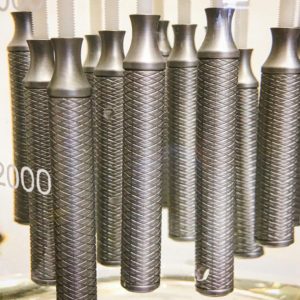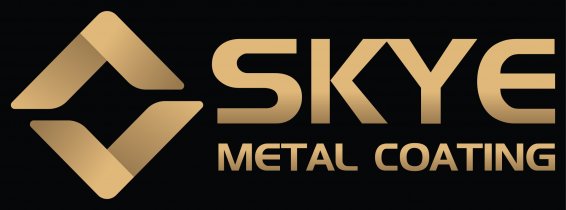Pickling and Passivation in Dubai:
Passivation of Stainless Steel is a process which treats the surface of the metal to impede corrosion. The process has two primary functions: first, to remove any free iron on the surface of the material. Second, to promote the growth of nickel and chrome oxides which give stainless steel its excellent corrosion resistant properties. It does not remove discoloration or heat scale from the surface of the part. To remove such material from the surface, one needs to utilize additional methods like acid pickling, alkaline descaling, or mechanical blasting. Many industries use passivation, and it is applicable to a broad spectrum of stainless steel and nickel alloys. It is important to note that improper heat treatment of stainless steel poses a risk of etching the parts during the process.

Passivation
Our services cater to a wide range of industries, including manufacturing, aerospace, automotive, pharmaceuticals, and more. We can handle passivation projects of stainless steel with any size and complexity, whether you need to remove iron rust for small components or large structures. Our state-of-the-art facilities are equipped with specialized tools and machinery. This enables us to execute our processes with precision and super high efficiency.
Quality Assurance:
Our commitment lies in providing passivation stainless steel process to be of the highest quality. We ensure precision and adherence to industry standards by implementing stringent quality control measures at every step of the conversion process. We conduct thorough inspections to guarantee the integrity and effectiveness of the surface treatment.
Surface Analysis: Our quality check begins with a comprehensive surface analysis. We meticulously examine the passivated surface, ensuring that it is free from any residual contaminants or impurities that could compromise the integrity of the process.
Verification of Acid Concentration and Temperature: Critical elements of the passivation process include acid concentration and temperature. Our quality checks involve precise verification to confirm that these parameters align with the recommended levels, ensuring an optimal and effective passivation outcome.
Measurement of Passivation Time: Passivation time is a crucial factor in determining the success of the process. Our quality checks include meticulous measurement of the passivation time to guarantee that it aligns with the specified duration, providing the stainless steel surface with the necessary protection against corrosion.
Visual Inspection: Beyond technical parameters, we conduct a visual inspection of the passivated components. This ensures that the aesthetics of the parts remain intact, and any unexpected visual changes are promptly addressed, upholding the overall quality of the process.
Testing and Verification of the process:
Corrosion Resistance Testing: A critical aspect of quality checks involves corrosion resistance testing. We subject the passivated components to rigorous testing to verify their ability to withstand corrosive environments, ensuring their longevity and reliability in real-world applications.
Final Verification: Before concluding the quality check, a final verification step is undertaken. This involves a comprehensive review of all parameters, ensuring that every facet of the coating process meets the stringent quality standards set by Skye Metal Coating.
Standard Specification No:
ASTM A967 Standard Specification for Chemical Passivation Treatments for Stainless Steel Parts
Frequently Asked Questions:
Q: What is a passivation process?
A: Passivation is a surface treatment method that removes impurities and creates a protective oxide layer on metal surfaces.
Q: What is passivation process on metal?
A: It involves treating the metal surface to remove contaminants and enhance corrosion resistance by forming a protective oxide layer.
Q: What chemical is used for passivation?
A: Skye Metal Coating uses acid-based solutions, such as nitric acid or citric acid, depending on the metal being treated.
Q: Why is passivation done?
A: Passivation is done to improve corrosion resistance by creating a protective layer that prevents rusting, staining, and other forms of corrosion on metal surfaces.
Q: Which Stainless steel can be used for Passivation?
A: Optimal results in passivation are achieved when utilizing the 300 series stainless steel alloys. It’s important to note that certain alloys from the 400 series and other high sulfide series may not be the most suitable candidates for the conversion process. To ensure the effectiveness of coating, it is recommended that all components within an assembly be constructed from the same alloy. This precaution is essential, as different alloys may exhibit varied appearances after undergoing the process. Maintaining uniformity in alloy selection guarantees a consistent and successful outcome for assemblies, promoting longevity and corrosion resistance.
Q: Explain more about how the Passivation Process works
A: In the passivation procedure, components are carefully arranged in a basket and immersed in either a nitric or citric acid bath. The specific stainless steel alloy dictates the acid concentration, temperature, and duration, ensuring the efficient removal of free iron and other foreign materials acquired during machining, stamping, and various manufacturing processes. After the procedure, the part emerges both clean and significantly more resistant to corrosion. Importantly, this transformative process does not alter the aesthetic appearance of the part, preserving its visual integrity while enhancing its durability and resistance to environmental degradation.
With our expertise, advanced facilities, and unwavering commitment to quality, we enhance the corrosion resistance and durability of your metal components. So, don’t hesitate to contact us today to discuss your needs. Let us provide you with outstanding results that not only meet but exceed your expectations.
CONTACT US HERE:
